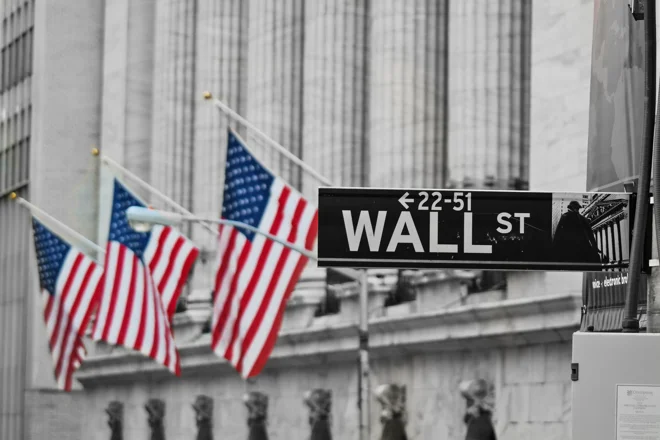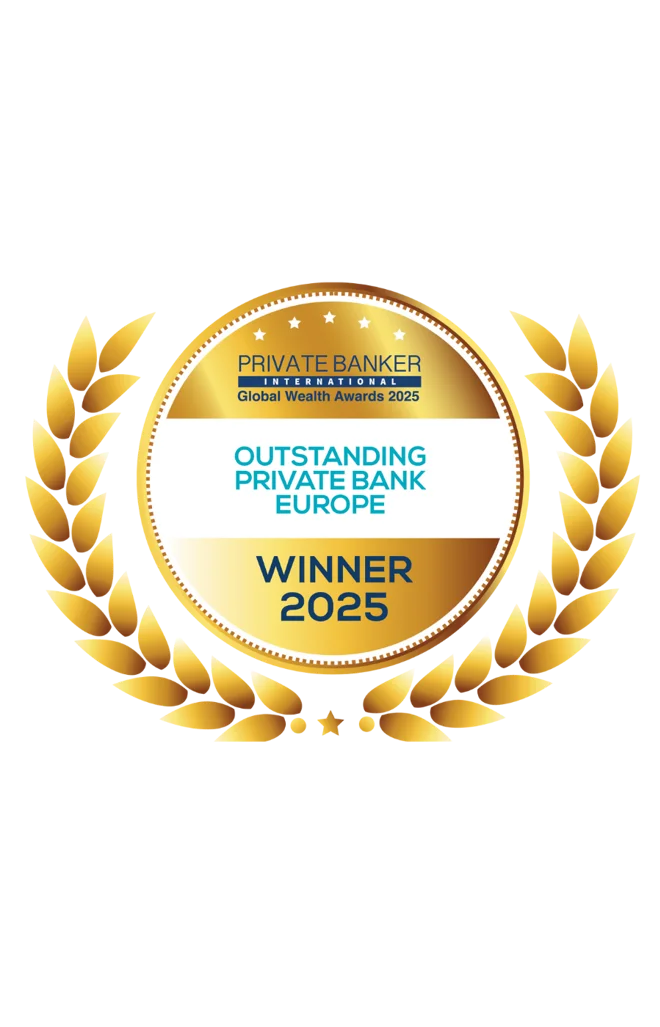WHAT YOU NEED TO KNOW
- Thematic investing is an approach that involves identifying significant secular trends that are underappreciated by the wider market.
- We use a quintet of powerful structural drivers to identify and monitor thematic opportunities: demographic change, regulatory developments, social shifts, sustainability and technological progress.
- To find out more about our approach to thematic investing please see our video her
INTRODUCING THEMATIC INVESTING
Thematic investing can be a powerful approach, which seeks to take advantage of significant secular trends that are underappreciated by the wider market. Over a multi-year time horizon, companies exposed to these trends have the potential to grow their revenues and cash flows faster than their competitors and command higher valuation multiples, leading to attractive returns for investors.
Not all investment themes are necessarily sustainable. Consider the multi-decade growth of combustion powered automotive vehicles, which in the US exploded from five cars per 1,000 people in 1910 to 245 by 1940 and 542 by 1970. Yet many of today’s most powerful trends have significant sustainable drivers – from healthcare to energy and food. For this reason, we include sustainable themes in our sustainable investing toolkit (figure 1). In addition, their typical bias towards smaller, faster-growing companies can contribute to portfolio diversification (figure 2).
A strong sustainable theme tends to be underpinned by enduring structural drivers, which may operate with a degree of independence from the broader economic cycle. Furthermore, a theme may derive investment (out)performance from the disconnect between its resilient structural drivers and the short-termism of financial markets (figure 3).
FIGURE 1: QUINTET’S SUSTAINABLE
INVESTMENT TOOLBOX
FIGURE 2: THEMATIC INVESTING
OFTEN HAS A GROWTH AND SMALL-CAP BIAS
Source: Quintet
FIGURE 3: THEMATIC INVESTING REQUIRES INVESTORS TO LENGTHEN THEIR TIME HORIZONS
RISING POPULARITY AND RISKS
Thematic investing has risen in popularity in recent years. According to Morningstar, public market equity thematic fund assets grew from USD 75 billion to USD 195 billion in the past three years, and now account for 1.0% of all public equity fund assets, up from 0.1% 10 years previously. However, identifying future successful themes and investment managers to capitalize upon the trends is not always straightforward. Just 45% of public market equity thematic funds launched before 2010 remained operational in 2020. Of the survivors, just one in four had total returns in excess of global equities (MSCI World). That’s why manager selection is such a crucial part of the process when investing thematically. Investments should be sought across asset classes – including private equity, private debt, venture and co-investment opportunities – in order to obtain the optimal exposure to a chosen theme.
QUINTET’S THEMATIC APPROACH
In order to provide a robust thematic process, we deploy a quintet of powerful structural drivers to identify and monitor thematic opportunities: demographic change, regulatory waves, social shifts, sustainability and technological progress. We score each potential thematic investment on these five factors (figure 4).
Demographic change encompasses long-term trends that are predictable, such as ageing and growing populations. For example, in 1968 the United Nations predicted that the global population would be 5.44 billion by 1990, which was remarkably close to the realized (estimated) figure of 5.35 billion (figure 5). Accurate predictions of birth rates, driven by contraception adoption and evolving attitudes to family size, can be combined with expected life expectancy with reference to infant mortality and access to healthcare. While investment markets often oscillate on short-term news, an understanding of demographic change can reveal diverse investment opportunities from care homes to next-generation pharmaceuticals.
Regulatory waves may seem fickle to changes in political regime. Yet typically, changes take place gradually over a long period as laws are updated to reflect a changing world. This is true for individual industries and at a broader level. For example, in the US economic deregulation was predominant in the 1920s before the Great Depression. The US re-regulated and pursued Keynesian policies for decades, before President Reagan in the 1980s once again deregulated the economy. Regulation – or its absence – can create super-normal or constrained profits, often impacting entire industries or countries for decades.
Social shifts are rarely unpredictable, and instead tend to occur gradually before gathering pace. For investors, identifying emerging trends and investing before they accelerate can be very beneficial. A recent example is the climate change theme. According to research by Yale University, the proportion of American adults who said climate change was important to them rose slowly from 55% in 2013 to 61% in 2016. However, in 2017 engagement accelerated, and by 2018 the measure was 72%. Climate change has since risen to the top of the public’s consciousness.
This gradual trend can be translated into investment performance. Data provider MSCI has built a ‘green’ index of global stocks, with over 50% of revenues coming from alternative energy, energy efficiency, green building, pollution prevention and sustainable waste. Its ‘brown’ index comprises companies that generate at least 50% of their revenues from thermal coal mining, generation of power from fossil fuels, and extraction and production of conventional and unconventional oil and gas. Setting the ratio of market capitalization to one at of the end of 2013, the ratio slowly increased in favour of green stocks to 1.4 by the end of 2015 and 1.6 by the end of 2017, before rocketing upwards in 2018 and hitting 2.8 in 2020 (figure 6).
Sustainability is undoubtedly a powerful theme that impacts areas from consumer choice to global energy consumption. For example, our employment practises are changing – on LinkedIn there are more than 68,000 job adverts related to ‘sustainability’, which is about 7,000 more than opportunities listed under ‘oil’. Investors have taken note of the strong evidence that sustainability has a positive relationship with operating performance and investment returns. A ground-breaking study conducted by Friede, Busch and Bassen reviewed more than 2,000 academic papers and firmly concluded the positive relationship (figure 7).
Technological progress is our fifth powerful structural driver. According to the National Bureau of Economic Research, it is the “only source of permanent increases in productivity”. Following a seminal 1957 research paper, it’s generally accepted that new technologies are adopted in the shape of a bell curve as they progress through ‘innovators’ to ‘early adopters’ to the ‘early’ then ‘late’ majority, followed by the ‘laggards’. This pattern of accelerating growth is reflected in different areas, such as the recent adoption of mobile money accounts (figure 8). For investors, correctly predicting which technologies are due to accelerate from ‘innovators’ and ‘early adopters’ to the mainstream can be lucrative.
FIGURE 5: DEMOGRAPHIC CHANGE IS VERY PREDICTABLE OVER LONG TIME PERIODS
FIGURE 6: SOCIAL SHIFTS TEND TO OCCUR GRADUALLY BEFORE GATHERING PACE
Sources: Yale University, MSCI, Quintet
FIGURE 7: ACADEMIC STUDIES FIND SUSTAINABILITY
IS LINKED TO POSITIVE CORPORATE ECONOMIC PERFORMANCE
Sources: Journal of Sustainable Finance and Investment, Quintet
FIGURE 8: TECHNOLOGICAL ADOPTIONIS RARELY LINEAR
Sources: GSMA, ourworldindata.org, Quintet
Quintet’s thematic framework considers the interplay of these five powerful structural forces. Each force on its own provides a degree of insight and visibility that can be valuable relative to the broader financial markets’ short-termism. However, their full potential is realized when deployed in combination, as themes at the intersection of several structural drivers are more likely to persist, and, over a multi-year time horizon, enable exposed companies to grow revenues and cash flows faster than their competitors.
MAPPING THEMES TO THE UN’S SUSTAINABLE DEVELOPMENT GOALS
As a bank that wants to contribute to developing a richer life, we also map themes to the United Nations’ Sustainable Development Goals (SDGs). The SDGs were adopted by all UN Member States in 2015 as a universal call to action to end poverty, protect the planet and ensure that all people enjoy peace and prosperity by 2030. It is important to note that while companies exposed to a given theme may be generating positive SDG-related impact through their operations, investors may not be creating incremental impact. For example, when transacting in liquid secondary markets, such as developed market equities, buying shares provides no fresh capital to the target corporate and does not affect the company’s behaviour. Although the investment aligns to the SDGs, it does not have a positive impact.
Going forward, Quintet’s investment analysts will be scanning the investment horizon to determine where change is creating opportunity, using a powerful set of thematic structural drivers.
COVID-19 WATCH
Globally confirmed cases of Covid-19 have now increased to almost 38 million, up from over 35 million seven days previously.
We expect the rate of economic growth to decelerate in the final part of this year – both outright and relative to the consensus. This shouldn’t be surprising. We’ve been describing the recovery as asynchronous over time, and uneven across countries and sectors. Most of all, we’ve characterised this cyclical phase as an incomplete one: rebounding after this winter’s full lockdown is easier than keeping up with that pace after the initial bounce.
However, we’ve been projecting a starker deceleration for a while, as the virus outbreak continues to spread across Europe and the US – and it’s not yet been halted in several large emerging markets, such as India and Brazil. Because of the containment measures that are being taken in many countries, economic activity is slowing more visibly. Real-time data on mobility across retail stores, recreation spots and transit stations correlate reasonably well with discretionary consumer spending. The data show a loss of momentum in the US, euro area and UK, and in some instances a deteriorating trend.
A cross-check of this information with other high-frequency and timely indicators confirms that consumption of services is decelerating. We expect this trend to be temporary: it should reverse once the virus containment measures are relaxed again. Conversely, and somewhat more encouragingly, surveys and hard data on manufacturing and construction activity remain rather strong – both in the US and in most, though not all, European countries.
We continue to expect overall economic growth to reach a more self-sustained escape velocity over a multi-quarter, cyclical horizon. But we also believe that activity looks set to hit a speed bump in Q4 this year. It’s not just that the containment measures to mitigate the spread of Covid-19 are likely to constrain the services sector further, with a possible knock-on impact on other sectors. It’s also that rising uncertainty – with so many political events clustered close to each other over the next few months – could negatively affect confidence, production and consumption.
HIGH-FREQUENCY INDICATORS SHOW WEAKENING ACTIVITY AT YEAR-END
Source: Google “Community Mobility Reports” database (average of Retail & Recreation and Transit Stations categories, 7-day moving average)
Authors:
AJ Singh Head of Sustainable Investing
Bas Gradussen Sustainable Investment Strategist
Giang Vu Sustainable Investment Strategist
Martynas Rudavicius Sustainable Investment Strategist
This document has been prepared by Quintet Private Bank (Europe) S.A. The statements and views expressed in this document – based upon information from sources believed to be reliable – are those of Quintet Private Bank (Europe) S.A. as of October 12, 2020, and are subject to change. This document is of a general nature and does not constitute legal, accounting, tax or investment advice. This document does not provide any individual investment advice and an investment decision must not be based merely on the information and data contained in the document. All investors should keep in mind that past performance is no indication of future performance, and that the value of investments may go up or down. Changes in exchange rates may also cause the value of underlying investments to go up or down. Copyright © Quintet Private Bank (Europe) S.A. 2020. All rights reserved.





